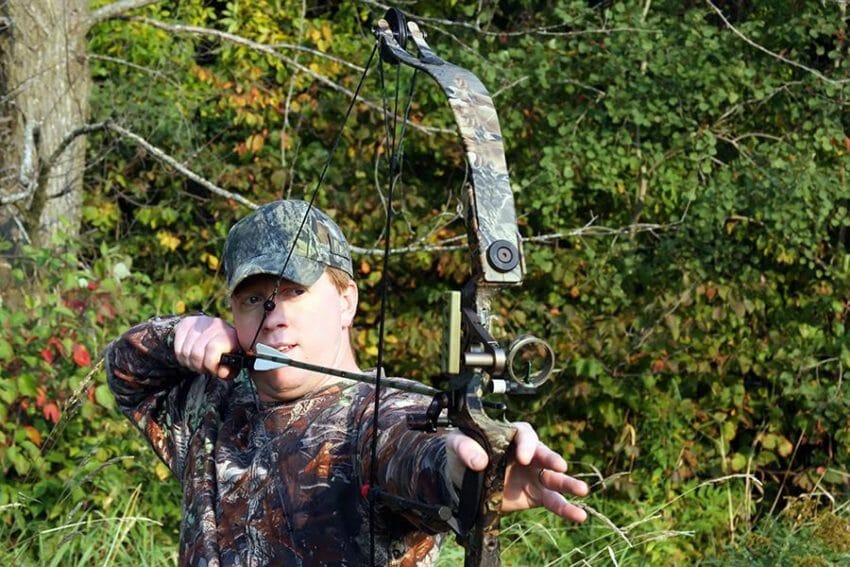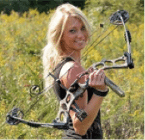
Powerful Tips On How To Use A Single Pin Sight The Right Way

If you want to stay at the top of the game on the archery field, you have to learn to embrace the change in this industry. Faster bows have been invented. The arrows used alongside them have become smaller. The arrow rests have transited from immobile to moveable.
Even more amazing, the bow sights have undergone significant changes from 3 to 5, 7 and just ONE pin! Yes, single pin sights are available today and will help you improve your shooting accuracy (and enjoy remarkable long-range success rates).
Single-pin sights are incredibly easy to sight in at any bow range – even for the amateur archers. But that’s not all. You MUST also incorporate the powerful tips discussed below on how to use a single pin sight (and get the most out of it) for the ultimate success…
- Mounting The Single Pin Sight Correctly
Single pin sights come with a lift of mounting instructions from the manufacturer. Follow these instructions for correct installation.
For the most sights, you just attach them to the bow riser and secure them using some screws. Most bows also come with pre-installed holes that let you connect your sight quickly.
When mounting your single pin sight, avoid over tightening the screws as this could lead to bow damages. Also, ensure the pin of you sight is set vertically to your bow string (the sight should be at a right angle to your bow).
One more thing: after you’ve successfully installed your sight, allow it to settle overnight. You may also want to tighten it further after it has settled.
- Aligning the Pin Correctly
A single pin sight is unique in that it eliminates the distractions of multiple pins clogging up your sight picture. Archers who suffer from poor vision always have issues acquiring their targets correctly, when using multiple pin sights – especially a moving deer- will have an easy time using this sight.
Setting your pin adjustment to the mid-point is critical in that it offers you maximum room for adjustment in any direction. You can conduct the adjustment process with the help of an Allen Wrench – readily available at the hardware stores.
- Setting Up Your Target And Marking Your Ranges
Ideally, you would want to mark off every ten yards from your target- at least up to 40 yards. For accuracy, we recommend you to use a rangefinder – you can obtain one from your local hunting and outdoor supply store.
And when selecting a target, choose a durable/stable one that will take a lot of arrows. Remember that sighting in a bow takes some time (and a lot of preparation).
- Sighting In Your Single Pin Sight
So far so good! At this point, you need to learn how to sight in the single pin correctly, right? As we did mention, this sight is completely easy to use and will take you a few seconds only to dial in the various distances. With wheeled adjustments, you can then make half-yard increments much quickly.
Here’s an example:
Let’s say you want to set the pin to 20 yards… Move to the closest distance to your target (usually the 10-yard mark). Stand in such a way that your body appears perpendicular to your target. Then draw an arrow back with the bow. Look down your sight at your pin and shoot the arrow at your target. Repeat with several other arrows.
Pay attention to these important steps:
– Note where the arrows hit your target compared to the sight. If they went above what your pin was indicating, then you ought to move your sight box up on your bow
– Repeat the above step until the arrows stops shooting above the pin
– Now step back to 20 (18.3m) yards and repeat the sighting process. Be sure to raise the sight box if necessary. Once your arrows aren’t hitting your pin, you can make some adjustments for the arrows going too far right or left by moving your sight right and left respectively.
– You don’t need to worry about accuracy yet – your pin will likely change with time.
This information will help you learn how to tweak your sight.
Once you’re done with the 20-yard mark, you can proceed to the 30-yard mark (by making a simple wheeled adjustment to your pin) and repeat the above process again.
Important note: Once you get used to the single pin sight, you’ll have an easy time tuning the yardage markers to however far your bow can shoot! Though most individual pins are dialed from 20-40 yards, you can chat easily cheat them to 60 yards during your practice sessions. For hunting, however, limit your shots to less than 40.
- Simplify Your Shot Sequence!
One compelling reason you should consider switching to a single pin sight is to simplify your shot sequence. The less you’ve to think after drawing, the better. Additionally, a single pin sight significantly de-clutters your sight window for even better shot sequence!
Models that come with a vertical pin will open up your sight window considerably and make a precision aiming incredibly easier. You’ll be able to see an animal on either side of your pin, and this will create better conditions for hitting what you wish to hit.
An even better idea is going for the vertical pin sight models whose sight aperture has a larger diameter. If you land on the styles with diameters pushing 2 inches, you’ll be luckier as they’re better in low light settings. They’ll give you much more open sight windows through which you aim.
Final Verdict
Learning to use a single pin sight correctly requires practice, practice, and practice. If you’re really serious about improving your archery skills, you need to dedicate a few days to learn how to use this accuracy-enhancing feature. The useful tips offered in this post will make your practice simpler and fun. You’ll learn how to install the bow correctly, set the pin, sighting in the pin, and making simplified shot sequences. And a few days, your accuracy will improve with each single shot you take.
Don’t forget to check out our reviews of the best single pin bow sights on the market right now.
Author Bio:
 Jennifer is the founder of BuckWithBow, a great blog that focuses on helping you learn how to hunt deer with a bow. As an experienced bow hunter, she will guide you through the Do’s and Don’ts of the bowhunting world and transform you into a better hunter. Whether you are an experienced bow hunter or an absolute beginner, you will find BuckWithBow a gem!
Jennifer is the founder of BuckWithBow, a great blog that focuses on helping you learn how to hunt deer with a bow. As an experienced bow hunter, she will guide you through the Do’s and Don’ts of the bowhunting world and transform you into a better hunter. Whether you are an experienced bow hunter or an absolute beginner, you will find BuckWithBow a gem!







